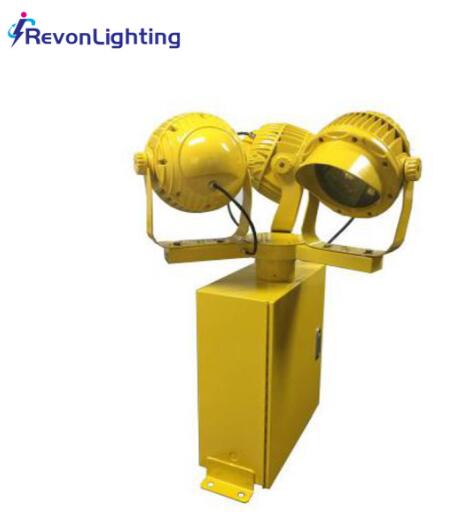Posted: 2025-07-03
The aviation industry has witnessed significant advancements in lighting technology, with LED beacon light aircraft systems emerging as a game-changer for aircraft visibility and safety. These high-performance lighting solutions have largely replaced traditional incandescent and xenon strobes, offering superior reliability, energy efficiency, and maintenance benefits.
This article explores the critical role of LED beacon light aircraft systems, their technical advantages, regulatory considerations, and emerging trends in aviation lighting technology.

The Critical Role of Aircraft Beacon Lights
Aircraft beacon lights serve as essential visual identification systems with three primary functions:
Collision Avoidance: Provides 360-degree visibility to other aircraft
Ground Operations Safety: Alerts ground personnel when engines are running
Aircraft Status Indication: Often linked to engine start-up sequences
| led beacon light aircraft |
Traditional rotating beacons have given way to modern LED beacon light aircraft systems that offer instantaneous illumination without warm-up periods.
Technical Advantages of LED Beacon Systems
Modern LED beacon light aircraft solutions provide numerous benefits over conventional lighting:
✔ Instant Activation: No warm-up time required
✔ Energy Efficiency: 50-70% less power consumption
✔ Extended Lifespan: 25,000+ operating hours
✔ Vibration Resistance: Solid-state design withstands turbulence
✔ Compact Size: Lighter weight than traditional units
✔ Brightness Control: Adjustable intensity settings
✔ Low Heat Emission: Reduced fire risk
Regulatory Compliance Standards
All LED beacon light aircraft systems must meet stringent aviation authority requirements:
| led beacon lights aircraft |
FAA TSO-C96: US technical standard for aircraft anticollision lights
EASA CS-23/25: European certification for light aircraft and transport category aircraft
ICAO Annex 6: International standards for aircraft operations
RTCA DO-160: Environmental testing conditions
Manufacturers must provide documentation proving compliance with these standards when offering LED beacon light aircraft systems for sale.
Installation Considerations
Proper installation of LED beacon light aircraft systems requires attention to:
Location: Typically mounted on vertical stabilizer or aircraft belly
Visibility Angles: Must provide unobstructed 360° coverage
Wiring: Proper shielding against electromagnetic interference
Synchronization: Coordination with other exterior lights
Maintenance Access: Easy inspection and replacement
Operational Best Practices
To maximize performance of LED beacon light aircraft systems:
Conduct pre-flight light checks
Clean lenses regularly
Monitor for moisture intrusion
Verify proper synchronization with other lights
Check electrical connections during routine maintenance
Emerging Technologies
The future of LED beacon light aircraft systems includes:
Smart Diagnostics: Built-in system health monitoring
Wireless Control: Integration with aircraft management systems
Enhanced Visibility: New LED configurations for better daytime conspicuity
Solar Hybrid Options: For eco-conscious operators
3D-Printed Housings: Custom aerodynamic designs
Comparative Analysis: LED vs Traditional
Feature LED Beacon Xenon Beacon
Power Consumption Low High
Lifespan 25,000+ hours 1,000-2,000 hours
Activation Time Instant Gradual
Maintenance Minimal Frequent bulb replacement
Vibration Resistance Excellent Moderate
Temperature Range -40°C to +85°C Limited extreme performance
Maintenance Guidelines
Proper care of LED beacon light aircraft systems involves:
Regular Inspections: Check for physical damage or corrosion
Lens Cleaning: Use approved cleaning solutions
Connection Checks: Verify secure electrical contacts
Performance Testing: Confirm proper flash pattern and intensity
Software Updates: For systems with programmable features
Industry Adoption Trends
The aviation sector shows clear migration patterns:
Commercial Airlines: 89% now use LED beacons
Business Aviation: 76% adoption rate
General Aviation: 62% conversion from traditional systems
Military Aircraft: Increasing specification of LED options
The transition to LED beacon light aircraft systems represents one of the most significant safety upgrades in modern aviation. These advanced lighting solutions provide unmatched reliability, visibility, and operational efficiency while reducing maintenance burdens and energy consumption.
As technology continues to evolve, we can expect even more sophisticated LED beacon light aircraft systems featuring smart connectivity, enhanced durability, and improved visibility characteristics. For aircraft operators and manufacturers, adopting these modern lighting solutions is not just an upgrade - it's an essential step toward safer, more efficient aviation operations.
The future of aircraft lighting is clearly illuminated by LED technology, with beacon systems leading the way in this transformative shift across all segments of the aviation industry.